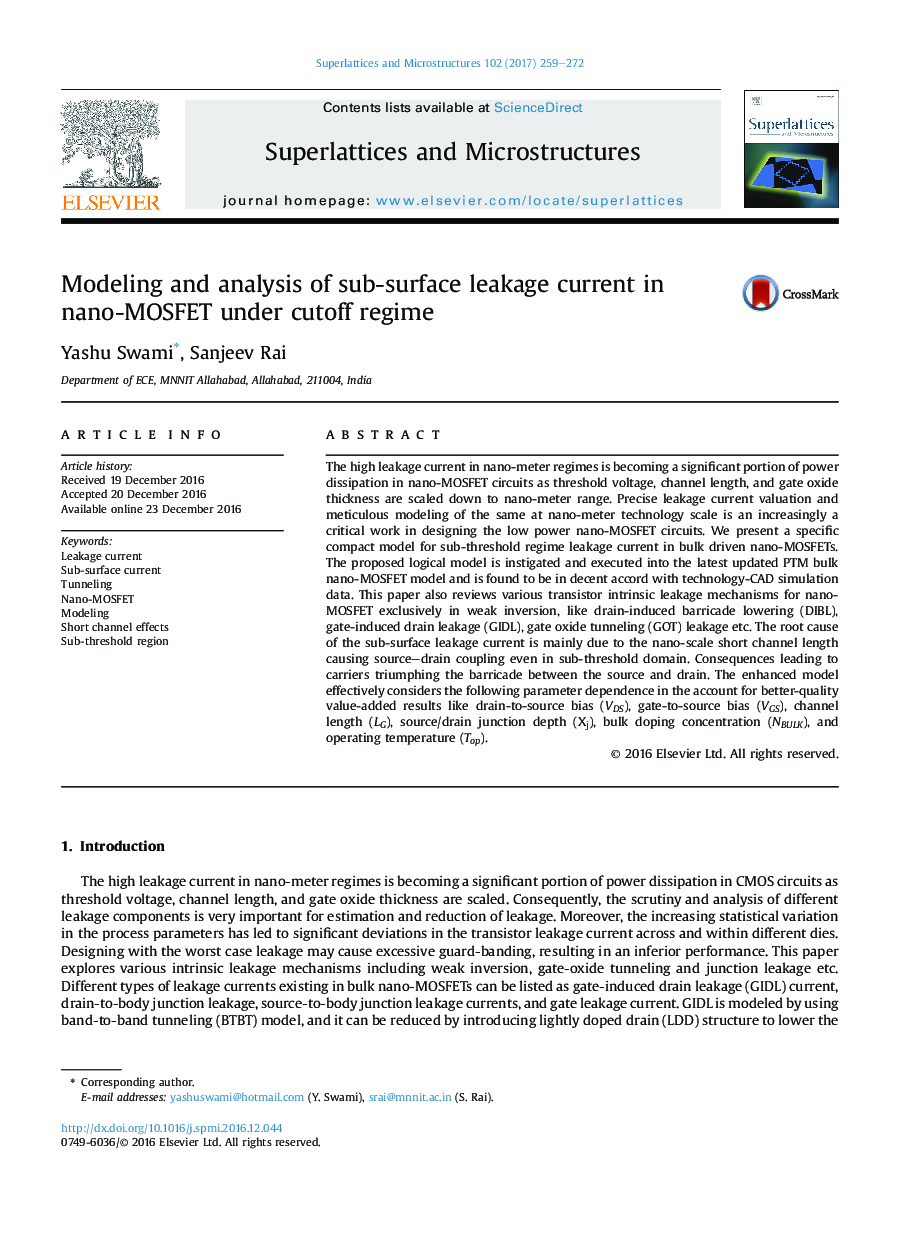| Article ID | Journal | Published Year | Pages | File Type |
|---|---|---|---|---|
| 7941137 | Superlattices and Microstructures | 2017 | 14 Pages |
Abstract
The high leakage current in nano-meter regimes is becoming a significant portion of power dissipation in nano-MOSFET circuits as threshold voltage, channel length, and gate oxide thickness are scaled down to nano-meter range. Precise leakage current valuation and meticulous modeling of the same at nano-meter technology scale is an increasingly a critical work in designing the low power nano-MOSFET circuits. We present a specific compact model for sub-threshold regime leakage current in bulk driven nano-MOSFETs. The proposed logical model is instigated and executed into the latest updated PTM bulk nano-MOSFET model and is found to be in decent accord with technology-CAD simulation data. This paper also reviews various transistor intrinsic leakage mechanisms for nano-MOSFET exclusively in weak inversion, like drain-induced barricade lowering (DIBL), gate-induced drain leakage (GIDL), gate oxide tunneling (GOT) leakage etc. The root cause of the sub-surface leakage current is mainly due to the nano-scale short channel length causing source-drain coupling even in sub-threshold domain. Consequences leading to carriers triumphing the barricade between the source and drain. The enhanced model effectively considers the following parameter dependence in the account for better-quality value-added results like drain-to-source bias (VDS), gate-to-source bias (VGS), channel length (LG), source/drain junction depth (Xj), bulk doping concentration (NBULK), and operating temperature (Top).
Related Topics
Physical Sciences and Engineering
Materials Science
Electronic, Optical and Magnetic Materials
Authors
Yashu Swami, Sanjeev Rai,
